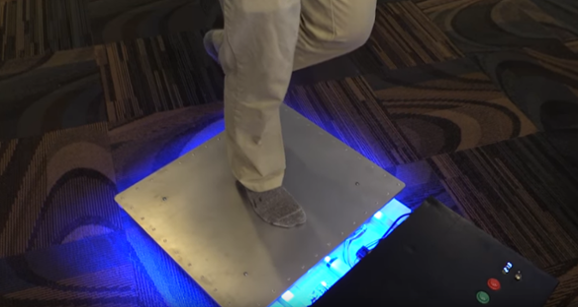Update: Past InVenture Prize Winners Launch Concussion Innovation

By and large, concussions comprise one of the heaviest-hitting issues for athletes. While over 300,000 sports-related concussions occur every year, research on the topic has progressed slowly. With initial symptoms dissipating as time goes on, doctors and on-field medics need better tools to diagnose the problem and track its effects.
Concussions are a result of trauma to the brain, when an outside force causes the brain to quickly move back and forth within the skull. Common acute symptoms can include dizziness, nausea, and headaches, among others; however, they may not arise until weeks later or never at all. If treated properly, recovery is possible. This is contingent upon the athlete returning to the sport when they are appropriately healed, which is not always the case.
When athletes return to play before their brain heals, they are at an increased risk for sustaining multiple concussions and even second impact syndrome, which causes massive swelling to the brain. Though rare, this has a devastating neurological impact on the athlete. Some die.
There is not a tried and true manner for evaluating player concussions. If an athlete was injured and returned to the athletic training room feeling fine and wanting to play, the device created by Team Wobble gives doctors a mode for evaluating whether he is fully recovered before he returns.
Current balance tests are plagued by low difficulty and a subjective scoring system, with no measure in place to differentiate between normal and abnormal balance. This forces clinicians to rely on self-reports. Problems with treatment are oftentimes subjective – there are many times an athlete can say s/he had no symptoms, while still experiencing them. While the initial symptoms of a concussion fade, but a lingering indicator remains to be balance. This can last anywhere from four to five weeks after the incident.
Team Wobble realized that this technology needed an update. With Georgia Tech student members Ana Gomez del Campo, biomedical engineering, Hailey Brown, mechanical engineering, Matthew Develin, biomedical engineering, and Garett Wallace, biomedical engineering, they created Wobble, a device suited to bring better concussion management to sports medicine programs across the country. The team created the prototype with support from ACTSI, and won $10,000 in Georgia Tech’s 2016 InVenture competition.
Wobble tests a person’s reactive balance, spinning and tilting the subject in randomized directions. Force sensors integrated in the plate read his center of pressure, evaluating the player’s center of pressure (COP). The sensor detects when the subjects lose their balance and step off the plate and determines their balance score through their time standing. The device, unlike current methods, is also programmed for different levels of difficulty for use of different skill levels and pathologies.
If an athlete was injured and returned to the athletic training room feeling fine and wanting to play, this device gives doctors a mode for evaluating whether he is fully recovered before he returns.
The team recently travelled to Paris as part of the Young Enterprise Initiative Start in France program.
As of March 15, 2017 Team Wobble is officially Patent Pending.